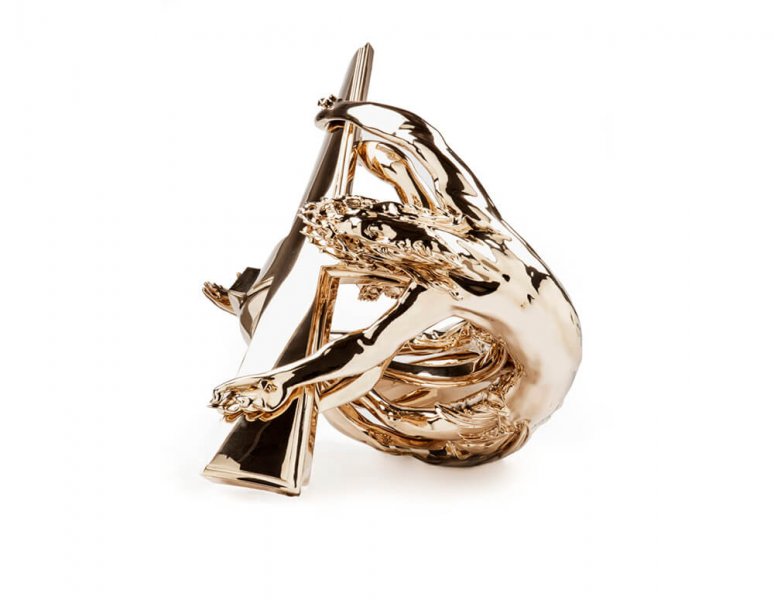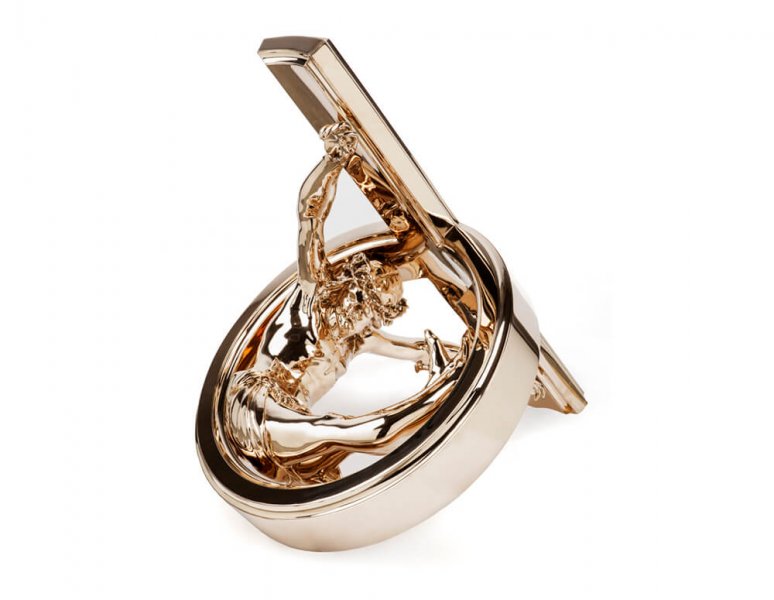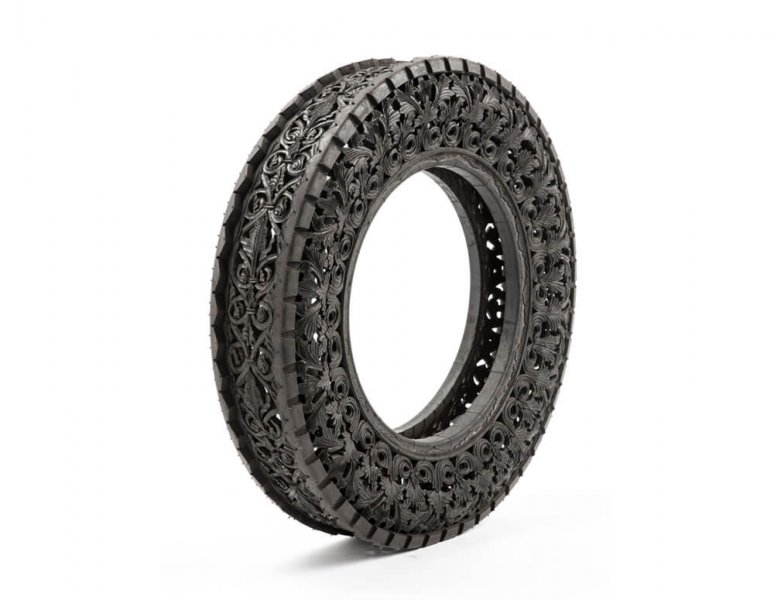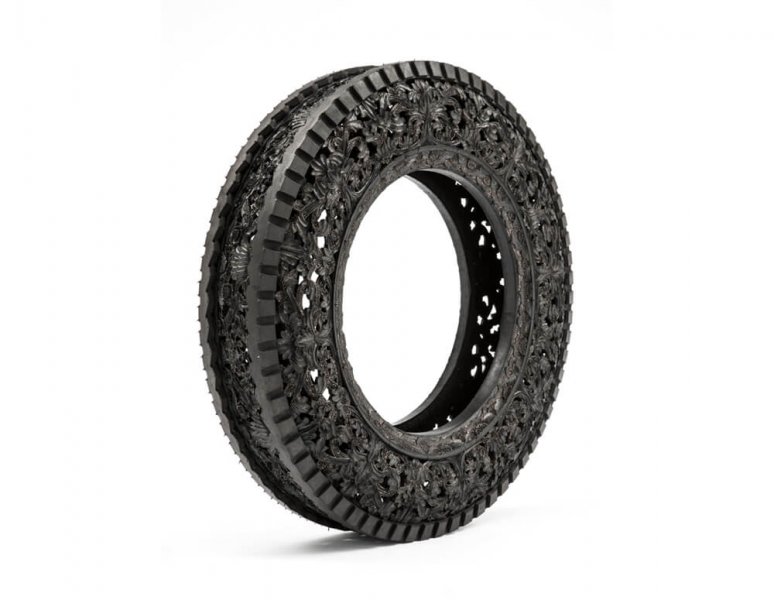Wim Delvoye
Wim Delvoye (1965, Wervik, Belgium).
Lives and works Ghent (Belgium) and Brighton (UK).
A neo-conceptual artist, Wim Delvoye, is widely recognized for his contemporary art that cleverly combines philosophical ideas, innovative use of materials, and a passion for craftsmanship. He blurs the boundaries between traditional art and the digital realm of contemporary artistic practices, creating aerodynamic, mathematically precise, and intricate sculptures that take the art and design to new levels of invention, while offering a perceptive and playful commentary on contemporary society.
His artistic exploration encompasses various aspects of art history, drawing inspiration both from Gothic cathedrals and 19th-century sculptures and the works by Bosch, Brueghel, and Warhol. Simultaneously, he unveils the beauty in everyday objects. Employing a baroque approach that oscillates between homage and irreverence, Delvoye appropriates and distorts motifs that captivate his imagination.
With the body of Gothic works that evolved since the early 2000s Delvoye walks a thin line between exploring artistic styles of the past and monumentality – by highlighting the medieval Gothic, interpreting it with contemporary themes and industrial techniques, he is aiming to create a new form of contemporary architecture. The works made of a laser cut corten steel plates reproduce neo-Gothic tracery. The ornaments on the works are not so much used as decorative quotations but as patterns of value and permanence in the modern era.
In the 1990s, Delvoye embarked on a daring experiment with tattoo art, specifically by tattooing the skin of pigs. Delvoye’s tattoos on these pigs incorporated Western iconography, including old school drawings, the Louis Vuitton monogram, and characters from Disney cartoons. By adorning pigskin with these iconic images, the artist raises thought-provoking questions about the commercial value of brands and challenges the conventional expectations of consumer society.
As of the 90s Delvoye radicalized the critical function of art, exploring the boundaries of commodity art, setting up his Cloaca-project. The machine that simulates the human digestive system, from the process of feeding with various mix of food to the production of the realistic wastes, Cloaca is based on real scientific and technical expertise. It is composed of successive receptacles containing acids, digestive juices, bacteria and enzymes, maintained at a temperature of 37.2°C. Marked by a logo that appears to be a mocking cross between the Mr.Clean and the Coca-Cola logo, Cloaca acts not as a metaphor, but as a concretization of the mechanisms of the modern economy. Its feeding is a demonstrative waste of product that reflects the commercialized mass market loaded with an added value. As an artwork that creates new artwork, it paradoxically gains a new added commercial value that unveils the possibility for endless market manipulation.
Wim Delvoye’s work has been on display at many venues through the years including Guggenheim Collection (Venice, Italy, 2009), Musée d’Art Moderne et d’Art Contemporain (MAMAC) (Nice, France, 2010), Musée Rodin (Paris, France, 2010), Palais des Beaux-Arts (BOZAR) (Brussels, Belgium, 2010-2011), Louvre (Paris, France, 2012), the Museum of Old and New Art (Hobart Tasmania, Australia, 2012), Pushkin State Museum of Fine Art (Moscow, Russia, 2014), Tehran Museum of Contemporary Art (Tehran, Iran, 2016), MUDAM (Luxembourg, 2016).







